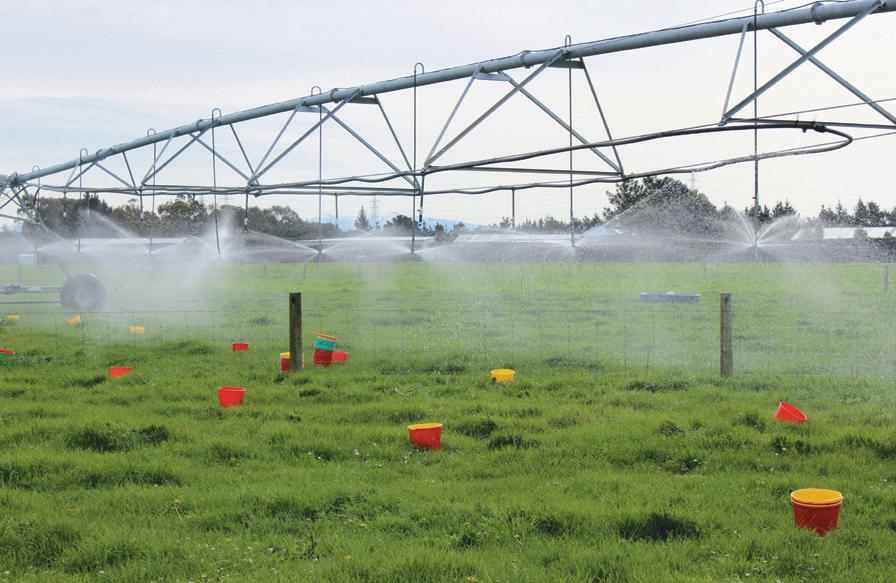
4 minute read
It’s a bread marketer’s dream
by Ruralco
Currently, the majority of New Zealand bread produced is made from Australian grain; and even when the wheat is New Zealand grown, the end product is seldom labelled as such. Making all New Zealand bread from New Zealand grown grain would provide a number of environmental and economic advantages.
WORDS BY ANNA HESLOP, FOUNDATION FOR ARABLE RESEARCH
Advertisement
New Zealand families could eat their daily bread, safe in the knowledge that it was the home grown product of an environmentally sustainable farming system and that its journey from paddock to plate produced fewer greenhouse gas emissions than market alternatives. For this reason, many of them would be prepared to pay a little more. If this sounds too good to be true, think again. FAR-led project has produced evidence to support all of the claims above.
High quality New Zealand grown milling wheat
There is a perception that the baking quality of New Zealand grown milling wheat is inferior to that grown in Australia. This myth has been busted by a FAR-commissioned study comparing Australian harvest crop reports from the last five years with New Zealand cereal performance trial (NZ CPT) results from the same period. The report, Quality attributes of New Zealand milling wheat cultivars, by Plant and Food Research, found a clear overlap in flour quality parameters between New Zealand wheat cultivars and the three Australian wheat grades most often imported into New Zealand (Australian prime hard wheat (APH), Australian hard wheat (AH) and Australian premium white wheat (APW)).
It also showed large variation in flour properties between batches of New Zealand milled Australian wheat. This was unexpected, as Australian wheat quality is generally perceived to be more consistent than New Zealand wheat quality, due to the mixing of lines that takes place during aggregation into grades before shipping to New Zealand.

grade flours, could be made by blending New Zealand wheat cultivars.
Environmentally sustainable production and a lower carbon footprint
So, if flour made from Australian wheat isn’t better quality, is it kinder on the environment? Again, FAR commissioned a report to find out. A study by Agrilink New Zealand, Wheat flour carbon footprint, used life cycle assessment (LCA) to determine the carbon footprint, or greenhouse gas (GHG) emissions, for 1 kg of New Zealand wheat flour and 1 kg of wheat flour, milled in New Zealand from Australian wheat.
The study took a ‘cradle to mill’ approach, which included upstream, farming, transport, and flour milling emissions. It did not include emissions from the manufacture, distribution, end use, or disposal of the final product (bread). carbon footprint than one kilogram of flour, milled from Australian wheat at the same mill. • New Zealand wheat flour, at the mill gate, has a carbon footprint of 560 kgCO2e/t flour (560g CO2e/kg flour). • Australian grown wheat flour, at the same mill gate, has a carbon footprint of 780 kgCO2e/t flour (780g CO2e/kg flour). On-farm emissions • On-farm emissions for Australian grown wheat are 340 kgCO2eq/t wheat. • On-farm emissions for New Zealand grown wheat are 280 kgCO2eq/t wheat. – The higher on-farm emissions for Australian grain is the result of significantly higher fertiliser and agrichemical use per unit of flour produced. • New Zealand on-farm emissions are 13% less than those reported in 2011. Transport emissions Transport emissions for both New Zealand and Australian wheat being milled in New Zealand, vary considerably depending on the distance between the farm it is grown on and the mill where it is processed. For Australian wheat this may include hundreds of kilometres transport to the export port, a trip across the Tasman and more land transport from the destination port to the mill. New Zealand grown wheat can also travel long distances. South Island grain shipped from Timaru to Tauranga and then trucked to Tirau could travel up to 200 km by road or rail, plus 1200 km at sea. However, the emissions created during shipping are only about a tenth of those created by road transport, so distance isn’t the only factor to consider. In summary, the report showed that emissions from flour made in New Zealand from Australian wheat were 16% to 29% higher than those from flour made from New Zealand wheat (depending on the transport scenario).
Flour milling emissions One area where Australia wheat does have a slight emissions advantage over New Zealand wheat, is in the actual milling process. This is because Australian wheat generally has lower moisture levels than New Zealand wheat (around 10% compared with 13.5%) and so yields more flour per tonne than the New Zealand product. The report notes that, based on publicly available information, the milling process emitted 184 kgCO2eq/t flour for Australian wheat and 188 kgCO2eq/t flour for New Zealand wheat.
Consumer demand
And finally, there is also data to show that the people who buy and eat bread in New Zealand care about the origins of their breakfast toast or lunchtime sandwich; and, that many of them would be prepared to pay more for a product that was clearly labelled as New Zealand grown. A 2019 survey carried out by Lincoln University’s Agribusiness and Economics Research Unit (AERU), found that 51% of respondents would be willing to pay on average $0.49 more for a loaf of bread made from New Zealand grain. The same survey also found that respondents were willing to pay extra for production systems that delivered environmental outcomes linked to carbon emissions and biodiversity, and that this was particularly true for bread made from wheat/flour produced in New Zealand.
Conclusion
When the information from all of these reports is considered, it is clear that there is a real opportunity to produce and market bread products made from 100% New Zealand grown grain. FAR is working closely with some millers, bakers and retailers to explore this opportunity and bring it to fruition.












